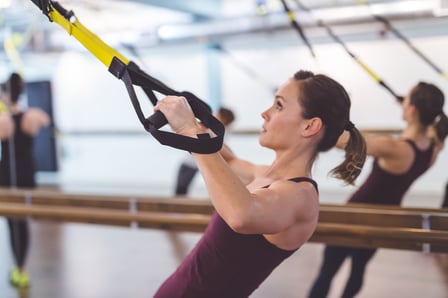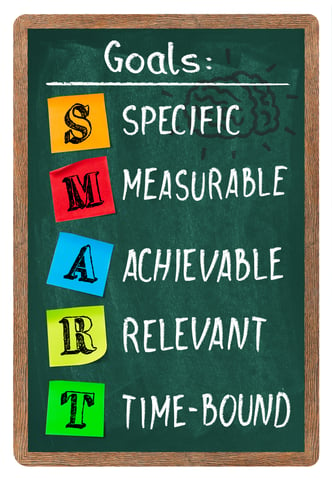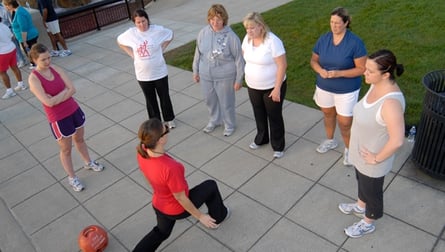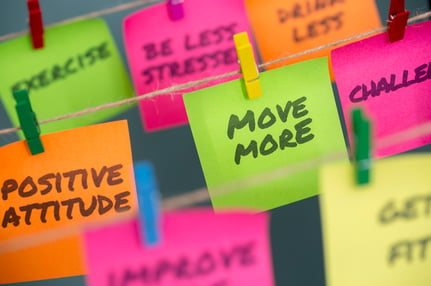 The holidays are a time of joy, celebration, and indulgence, but they can also disrupt our daily routines. Whether you’ve been traveling, enjoying family time, or indulging in festive foods, getting back into a fitness and nutrition routine can feel daunting. If you’re ready to refocus and regain your momentum, here are some practical tips to help you reset and thrive.
The holidays are a time of joy, celebration, and indulgence, but they can also disrupt our daily routines. Whether you’ve been traveling, enjoying family time, or indulging in festive foods, getting back into a fitness and nutrition routine can feel daunting. If you’re ready to refocus and regain your momentum, here are some practical tips to help you reset and thrive.
Focus on Nutrition Basics
Holiday treats are enjoyable, but now is the time to return to balanced eating. Start by incorporating more whole foods into your meals, such as lean proteins, fruits, vegetables, and whole grains. Meal prepping can also be a game-changer. Preparing your meals in advance ensures you have nourishing options ready when life gets busy. Once you’ve started nourishing your body with balanced meals, reintroducing regular physical activity can feel even more manageable and rewarding.
Start with Small Steps
After time away from your regular routine, it’s tempting to dive back in full force. However, starting small allows you to build mental wins that boost confidence and motivation. For example, committing to just a couple of gym sessions per week or taking a daily 15-minute walk can create a sense of accomplishment. These small victories lay the foundation for more ambitious goals, helping you gradually build momentum and reestablish healthy habits.
Prioritize Consistency Over Intensity
Consistency is the cornerstone of sustainable progress. Even if your workouts feel less intense than before, showing up regularly matters more. Consider scheduling your workouts as you would a class or meeting. Having a set time can help re-establish the habit and keep you accountable.
Revisit Your Goals
Use this post-holiday period as an opportunity to reflect on your fitness and health goals. Are they still aligned with your current priorities? If not, adjust them. Setting realistic and specific goals—like improving your squat strength, running a 5K, or simply feeling more energized—can reignite your motivation.
Stay Hydrated and Rested
Hydration and sleep are often overlooked but are crucial for recovery and performance. After holiday travel or late nights, prioritize getting enough quality sleep and drinking plenty of water. These simple actions can boost your energy levels and improve workout performance.
Seek Support
If you’re struggling to find motivation, consider teaming up with a friend or joining a group fitness class. Accountability partners can make the process more enjoyable and help you stay on track. If you need personalized guidance, a Registered Dietitian or fitness coach can provide tailored advice to meet your goals.
Celebrate Small Wins
As you ease back into your routine, celebrate small milestones. Whether it’s completing your first workout of the year or preparing a week’s worth of healthy meals, acknowledging progress keeps you motivated and builds momentum.
Getting back into a routine after the holidays doesn’t have to be overwhelming. By focusing on small, sustainable changes and prioritizing consistency, you can set yourself up for a successful and rewarding year ahead. The most important thing is to start—progress, not perfection, is what truly matters.
Looking for a way to get your goals started? Try with our new fitness program, We Win Together! Start with a personalized strategy session to set a SMART goal and create weekly action plans with your NIFS staff member. Stay motivated through individual check-ins, group meetings, and support from a like-minded wellness team. Sign up today and take the first step toward a healthier, more empowered you!


 With the new school year upon us, it’s time to start thinking about “back to school” fitness. Summer was a time for adventure, vacation, trying new foods, and so much more. Although all that stuff is fun, it can get us out of a routine. As a newly graduated college student, I know how much a routine helped me stay on track for my classes. One thing I always included was exercise. Having consistent workouts is the first step toward a disciplined life.
With the new school year upon us, it’s time to start thinking about “back to school” fitness. Summer was a time for adventure, vacation, trying new foods, and so much more. Although all that stuff is fun, it can get us out of a routine. As a newly graduated college student, I know how much a routine helped me stay on track for my classes. One thing I always included was exercise. Having consistent workouts is the first step toward a disciplined life. 
 Have you ever started an exercise program and for whatever reason were not able to stick with it? There are many reasons that you may not be able to stick with an exercise program. It might be too hard, and you are not able to maintain the amount of work that is required. Maybe your workouts take too much time, and you are not able to fit it into your schedule. Or maybe you are not seeing the results you want. Whatever the reason that you were not able to find sustainability within your exercise program, there is always a solution. The best way I have found to find sustainability in exercise is to figure out your goals, then pick your programming, and lastly find consistency in your exercise.
Have you ever started an exercise program and for whatever reason were not able to stick with it? There are many reasons that you may not be able to stick with an exercise program. It might be too hard, and you are not able to maintain the amount of work that is required. Maybe your workouts take too much time, and you are not able to fit it into your schedule. Or maybe you are not seeing the results you want. Whatever the reason that you were not able to find sustainability within your exercise program, there is always a solution. The best way I have found to find sustainability in exercise is to figure out your goals, then pick your programming, and lastly find consistency in your exercise.  Think about some top goals you have. Maybe your top goal is to
Think about some top goals you have. Maybe your top goal is to 
 Ramp Up to Weight Loss
Ramp Up to Weight Loss The ultimate goal by the end of the 16 weeks is to make sure you feel confident in your own abilities to continue the journey that you are on. Whether you are struggling with nutrition, knowing what to do in the gym, sleep, or stress management, this program provides resources to teach you how to handle these situations in ways that will aid you in achieving goals. We start by setting one long-term goal, then break it down into short-term goals to act as stepping stones to get there. After all of the goals are finalized, we look at what action steps can be taken to achieve them. Setting realistic goals is essential for staying on track, and reaching them builds confidence in your abilities.
The ultimate goal by the end of the 16 weeks is to make sure you feel confident in your own abilities to continue the journey that you are on. Whether you are struggling with nutrition, knowing what to do in the gym, sleep, or stress management, this program provides resources to teach you how to handle these situations in ways that will aid you in achieving goals. We start by setting one long-term goal, then break it down into short-term goals to act as stepping stones to get there. After all of the goals are finalized, we look at what action steps can be taken to achieve them. Setting realistic goals is essential for staying on track, and reaching them builds confidence in your abilities.
 It’s time to get serious about goal setting. Setting goals can help you dig more deeply into fitness and think about what you truly want to accomplish. Goals can range from wanting to walk 1 mile to squatting 2 times your body weight, and absolutely everything in between and beyond. Everyone is on a different path to fitness, so whatever your goals may be is completely up to you.
It’s time to get serious about goal setting. Setting goals can help you dig more deeply into fitness and think about what you truly want to accomplish. Goals can range from wanting to walk 1 mile to squatting 2 times your body weight, and absolutely everything in between and beyond. Everyone is on a different path to fitness, so whatever your goals may be is completely up to you. Consistency is arguably the most important component when working to accomplish goals, in or out of the gym. Without consistency, programs are unorganized, the body has a harder time adapting, and forming habits may be more challenging.
Consistency is arguably the most important component when working to accomplish goals, in or out of the gym. Without consistency, programs are unorganized, the body has a harder time adapting, and forming habits may be more challenging. So often in life people like to look at things as win or lose. But what if you switched your perspective to thinking of making progress by winning each day? With this simple shift, your days can be filled with more positivity and success instead of the typical mindset of losing or not being good enough.
So often in life people like to look at things as win or lose. But what if you switched your perspective to thinking of making progress by winning each day? With this simple shift, your days can be filled with more positivity and success instead of the typical mindset of losing or not being good enough. Where did this year go? Whether it was the best year of your life, or you’re looking forward to a fresh start in the new year, you may likely have some health and fitness goals at the top of your list of resolutions. How do you make sure they aren’t just a pipe dream? Let’s find out!
Where did this year go? Whether it was the best year of your life, or you’re looking forward to a fresh start in the new year, you may likely have some health and fitness goals at the top of your list of resolutions. How do you make sure they aren’t just a pipe dream? Let’s find out!
 Running a marathon can be a very
Running a marathon can be a very  NIFS Fall Marathon Training Program
NIFS Fall Marathon Training Program